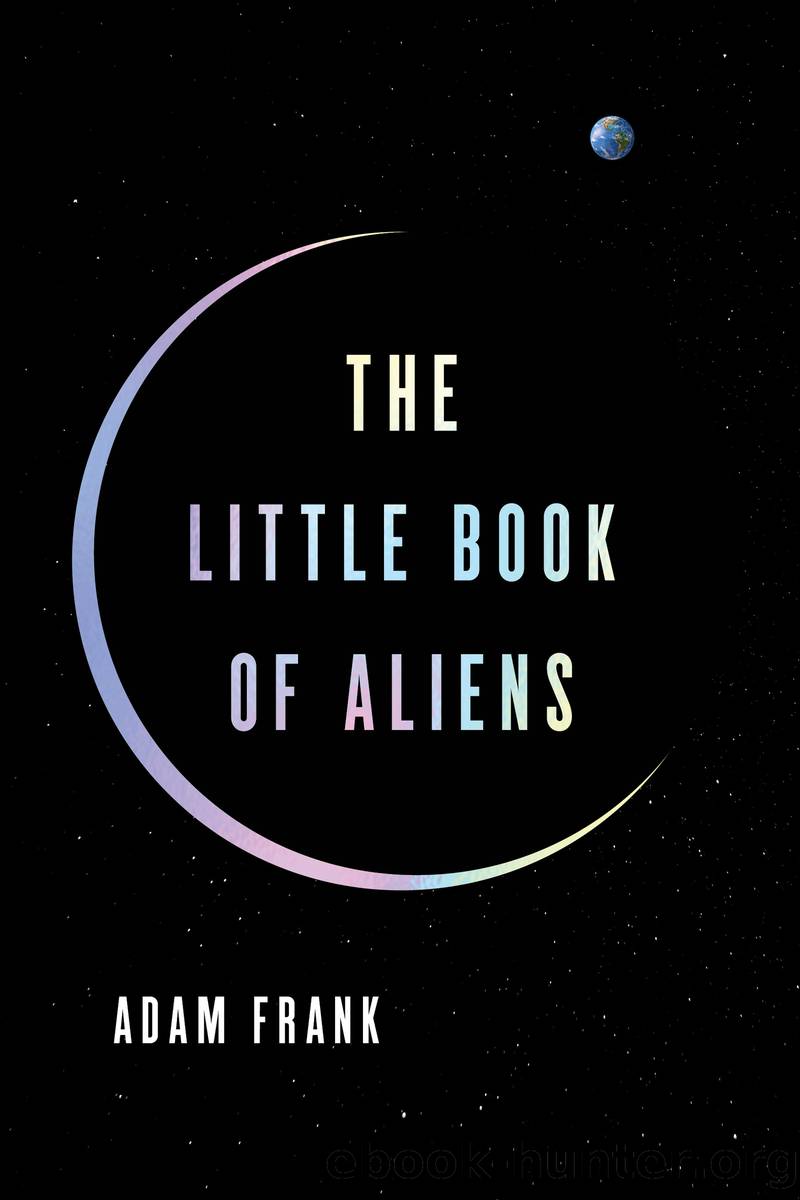The Little Book of Aliens by Adam Frank

Author:Adam Frank
Language: eng
Format: epub
Publisher: HarperCollins
Published: 2023-09-02T00:00:00+00:00
The Ocean Moons
Who knew?
If the hunt for life is also the hunt for water, thereâs a whole other class of target hiding out at the edges of the solar system. Consider for a moment all of Earthâs oceansâthe vast depths of the Atlantic from Newfoundland to Ireland in the north and the tip of Argentina to the Horn of Africa in the south. And donât forget the endless expanse of the Pacific with its deep canyons stretching down six watery miles. Now hold the thought of all that water in your mind and consider this crazy solar-system fact. All of the surface water on Earth is just about half the amount in the ocean on Europa, a small moon of Jupiter. And Europa is just one of the solar systemâs ocean moons.
Jupiter and Saturn are themselves not a good place for life to form. These huge worlds have no surface. They are just endless depths of hydrogen and helium gas that reach pressures that could crush submarines (and then even diamonds) as you go deeper. But the gas giants are surrounded by extended families of orbiting moons. Most of these are nothing more than captured asteroids. A handful of the moons are, however, small worlds in their own right. In 1979 NASA sent probes flying past Jupiter, and the high resolution images they returned of Europa, the second-closest moon, were nothing less than shocking.
By comparison to most other objects in the solar system, Europaâs surface was as smooth as a babyâs butt. Unlike most other moons, there were almost no craters. Instead, the images showed a network of fractured lines that looked a lot like cracks in arctic ice. And thatâs exactly what they were. Astronomers soon realized that, unlike the other moons orbiting Jupiter, Europa was entirely covered by a layer of ice at least six miles thick! Below that mantle of ice was a liquid water ocean stretching down as far as sixty miles. Europa is a rocky moon entirely covered in a deep ocean topped off by a thick mantle of ice.
The realization that Europa had so much water upended astronomersâ expectations for life in the solar system. Jupiter and Saturn are far outside the Sunâs habitable zone, so no one ever focused much on them as a home for life. But once the ocean on Europa was discovered, scientists had another world within the solar system that hosted lifeâs most important resource. Suddenly the question of life on Europa loomed large. But no sunlight could ever penetrate Europaâs six-mile-thick icy crust. Without light, what would power a Europan biosphere?
The answer is one of our other forces: gravity.
Jupiter is a huge planet with 317 times the mass of Earth. The gravitational pull from all that Jovian stuff tugs and stretches the insides of Jupiterâs moons, including Europaâs. Itâs the same process that creates the ocean tides on our Earth, which are mainly driven by the Moonâs gravity. Tidal forces from Jupiter stretch and squeeze the rocky core of Europa as it swings around in its orbit.
Download
This site does not store any files on its server. We only index and link to content provided by other sites. Please contact the content providers to delete copyright contents if any and email us, we'll remove relevant links or contents immediately.
| American National Standards Institute (ANSI) Publications | Architecture |
| History | Measurements |
| Patents & Inventions | Research |
Whiskies Galore by Ian Buxton(40535)
Introduction to Aircraft Design (Cambridge Aerospace Series) by John P. Fielding(32349)
Small Unmanned Fixed-wing Aircraft Design by Andrew J. Keane Andras Sobester James P. Scanlan & András Sóbester & James P. Scanlan(32149)
Craft Beer for the Homebrewer by Michael Agnew(17464)
Turbulence by E. J. Noyes(7061)
The Complete Stick Figure Physics Tutorials by Allen Sarah(6650)
Kaplan MCAT General Chemistry Review by Kaplan(6071)
The Thirst by Nesbo Jo(5800)
Bad Blood by John Carreyrou(5784)
Learning SQL by Alan Beaulieu(5428)
Weapons of Math Destruction by Cathy O'Neil(5051)
Man-made Catastrophes and Risk Information Concealment by Dmitry Chernov & Didier Sornette(4751)
iGen by Jean M. Twenge(4708)
Digital Minimalism by Cal Newport;(4575)
Life 3.0: Being Human in the Age of Artificial Intelligence by Tegmark Max(4524)
Audition by Ryu Murakami(4108)
Electronic Devices & Circuits by Jacob Millman & Christos C. Halkias(4050)
1,001 ASVAB Practice Questions For Dummies by Powers Rod(4049)
Pale Blue Dot by Carl Sagan(4018)
